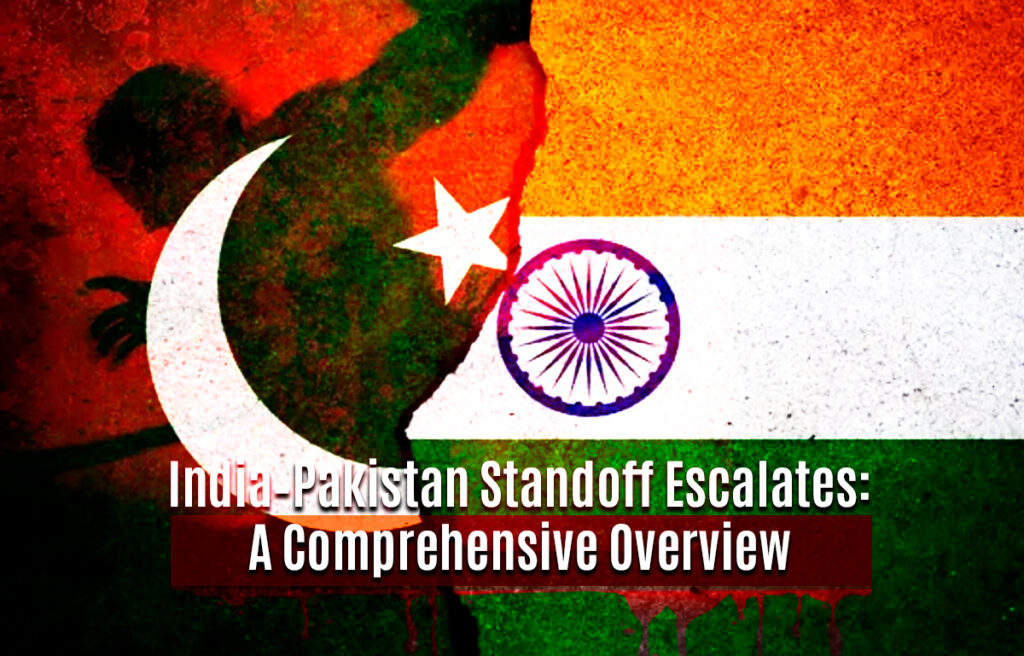Introduction
The longstanding tension between India and Pakistan has reached a critical juncture following a devastating terrorist attack in Pahalgam, Jammu and Kashmir, on April 22, 2025. The assault resulted in the deaths of 26 individuals, predominantly Hindu tourists, and has reignited hostilities between the two nuclear-armed neighbors. This article delves into the events surrounding the attack, the subsequent diplomatic fallout, military escalations, and the broader implications for regional stability.
The Pahalgam Attack: A Catalyst for Renewed Hostilities
On April 22, 2025, armed militants launched a brutal attack in the Baisaran Valley near Pahalgam, targeting a group of tourists. Eyewitnesses reported that the assailants segregated victims based on religious identity before opening fire, resulting in 26 fatalities and over 20 injuries. The Resistance Front (TRF), an offshoot of the Pakistan-based Lashkar-e-Taiba, claimed responsibility for the attack. Indian authorities identified three attackers, including two Pakistani nationals, and accused Pakistan of supporting cross-border terrorism—a claim Islamabad vehemently denies .
Diplomatic Fallout: Tit-for-Tat Measures
In the wake of the attack, India took several punitive actions:
-
Expulsion of Diplomats: India expelled Pakistani diplomats and withdrew its own from Islamabad.
-
Visa Suspensions: All visas for Pakistani nationals were suspended.
-
Indus Waters Treaty: India suspended the Indus Waters Treaty, a significant move given the treaty’s role in water-sharing between the two nations.
-
Border Closures: India closed its borders to Pakistani nationals.Reuters+1Reuters+1
Pakistan responded by:Wikipedia
-
Airspace Closure: Closing its airspace to Indian aircraft.
-
Trade Suspension: Halting all trade with India.Wikipedia
-
Shimla Agreement Suspension: Suspending the 1972 Shimla Agreement, which has been a cornerstone of bilateral relations .Wikipedia
Military Escalations: Skirmishes and Strategic Posturing
The situation has further deteriorated with reports of military engagements along the Line of Control (LoC):AP News
-
Cross-Border Fire: Both nations have reported exchanges of small arms fire across the LoC, with India accusing Pakistan of initiating unprovoked attacks .
-
Drone Incursions: Pakistan claims to have shot down two Indian drones allegedly violating its airspace .
-
Military Mobilization: India has granted its military commanders a “free hand” to respond to provocations, while Pakistan warns of a potential Indian military strike within 24 to 36 hours .
International Reactions: Calls for Restraint
The international community has expressed concern over the escalating tensions:
-
United Nations: UN Secretary-General António Guterres has urged both nations to exercise maximum restraint and engage in dialogue.
-
United States: The U.S. State Department has called for de-escalation and emphasized the importance of direct communication between the two governments.
-
China: Beijing has advocated for peaceful resolution and stability in the region .
Impact on Civilians: Displacement and Fear
The renewed hostilities have had a profound impact on civilians:
-
Tourism Decline: Kashmir, once a burgeoning tourist destination, has seen a mass exodus of visitors.
-
Displacement: Residents along the LoC have been forced to evacuate due to shelling and fear of further conflict.
-
Economic Strain: The suspension of trade and tourism has adversely affected local economies on both sides of the border .
Historical Context: A Legacy of Conflict
The Kashmir region has been a flashpoint between India and Pakistan since the partition in 1947. The current standoff is reminiscent of past conflicts, including the Kargil War in 1999 and the Pulwama attack in 2019. The cyclical nature of violence underscores the need for a sustainable and peaceful resolution to the Kashmir dispute .AP NewsCouncil on Foreign Relations
Conclusion: A Call for Dialogue
The recent events have brought India and Pakistan to the brink of a potential large-scale conflict. While both nations have legitimate security concerns, the path forward must prioritize diplomacy over aggression. Engaging in constructive dialogue, with international mediation if necessary, is imperative to prevent further loss of life and ensure regional stability.
Sources:







